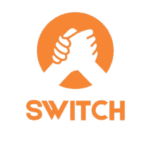Search Engine Optimization
tips and tricks part 2
Definitely every novice SEO optimizer needs guidance and advice on how to structure your workflow, what to focus on and what is actually important to begin with. The material is quite complex and if you skip some of the initial steps it can get lost in the countless software for analysis, optimization techniques, way of writing content and more and more, hundreds of processes.
In the first part (https://bit.ly/32Ib9Md) of our article we introduced you to some basic SEO practices, terms and common tips on what to focus on a novice optimizer. We hope that at least some of the things were useful for you to start to capture the big picture with your eyes.
We will try to be useful to you here with more interesting tips and basic practices to help you go in the right direction.
6. Which SEO tools can be useful to us ?
Each website pursues different goals. Many SEO optimization tools have been created for each purpose. They are an advanced technical solution for the visibility and traffic of websites. Here are some recommended tools for guaranteed success:
Google Keyword Planner – Provides keyword and traffic estimates to help you build a search campaign.
Google Webmaster Tools – an information tool that offers monitoring of your website and helps you find problems and errors;
Yoast – a WordPress tool that makes it easy to format titles and meta descriptions, set keywords, and track how often
use;
7.Your "meta" description is crucial ?

Meta description is the short paragraph of text (piece of information) below the URL that is used as a description of the site in search engine results.
The meta description must be placed in the HTML tag of your page and must usually be up to 160 characters long.
It’s important to have a good meta description, because that’s what users see when they decide whether to click on the link to your site. Google may or may not decide to use your description and may even change it. However, this is one of the places you want to pay attention to, as Google will use it when trying to figure out what your page is about.
It’s also a good idea to include your keywords in the meta description to make it appealing to actual readers who browse search engine results pages (SERPs).
8. Make sure your URLs look good
Although most users will pay little attention to your URLs, they are important to your basic SEO. It is best practice to keep your URLs as simple as possible. Google requires you to have simple, readable URLs to give them a logical structure.
This means that you should use text in your URLs instead of numbers, and that the URL should describe what the content of the page is, and be as short as possible. Yes, it’s that easy. Just try to be logical and user-friendly with your URLs.
You can use your URLs as a place to place your main keywords. Of course, keyword stuffing is not allowed! Remember, as soon as possible. However, placing a primary keyword in the URL shouldn’t be a problem.
For example, if you’re writing about the best movies of all time, your URL might look like this:
domain.com/best-movies
9. Don't forget to link to yourself!
While it’s important to get backlinks and link to other people, don’t forget to link to yourself through internal links.
Internal links are links that go from one web page to another within the same domain. These links are especially useful because they allow users to navigate through a site. An example of an internal link could be a link to your own website, a blog article, your service page, and so on. .
Internal links can help you promote your own content and other products or services. So, take advantage of them!
10. Headings and sub-headings (like this here)
Headings and subheadings are <h1>, <h2> and <h3> HTML tags. These are the titles of the sections or that users see on the page.
There should be only one <h1> tag on a webpage, and this title should contain the main keyword that your content focuses on. Google checks these tags in the same way it checks for title tags, so be prepared to optimize that part of your page. Often, content management systems (CMS) like WordPress automatically include a <h1> tag for you with the title of the page or article. In this case, you do not need to include another.
Subheadings <h2> and <h3> should also include your target keywords. Remember, however, to always write about the reader and use titles that help your visitors navigate your page.
SEO optimization is one of the most promising areas of digital marketing at the moment. Even for some businesses, this is the best option, in the long run, to generate sales. And for this reason we organize a course for complete beginners in September, with us at SWITCH.
You can learn everything about the course here -> https://switchvarna.com/bg/courses/seo-marketing/
Author: Switch Co-Working Space
Co-author: TwinWord

